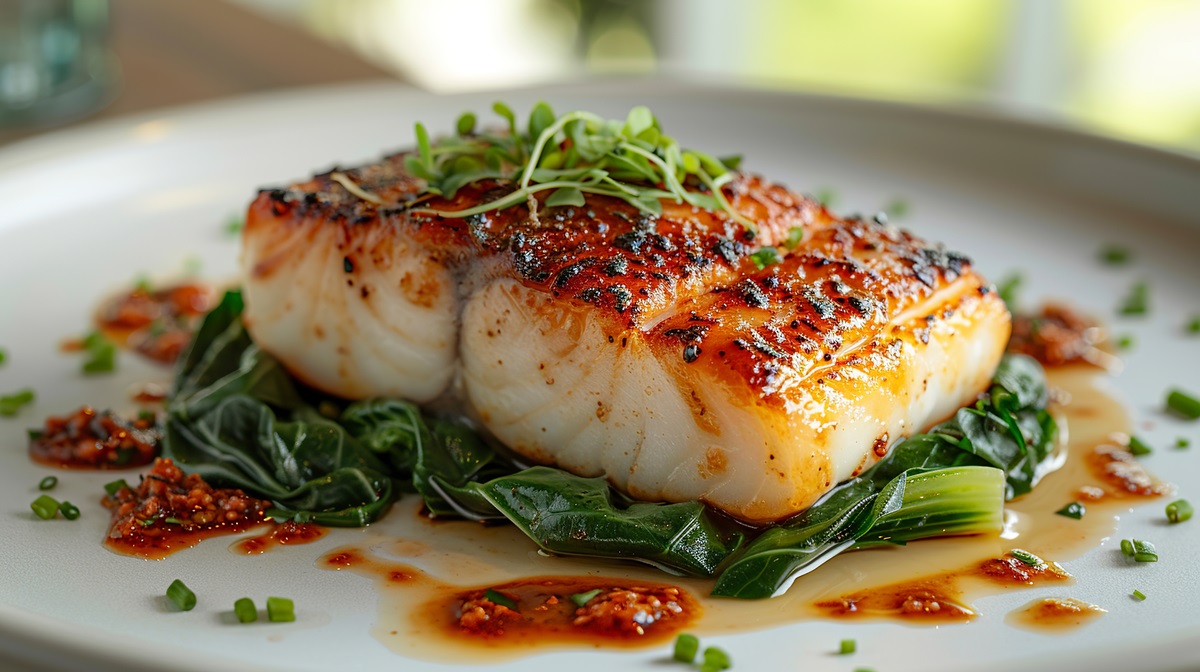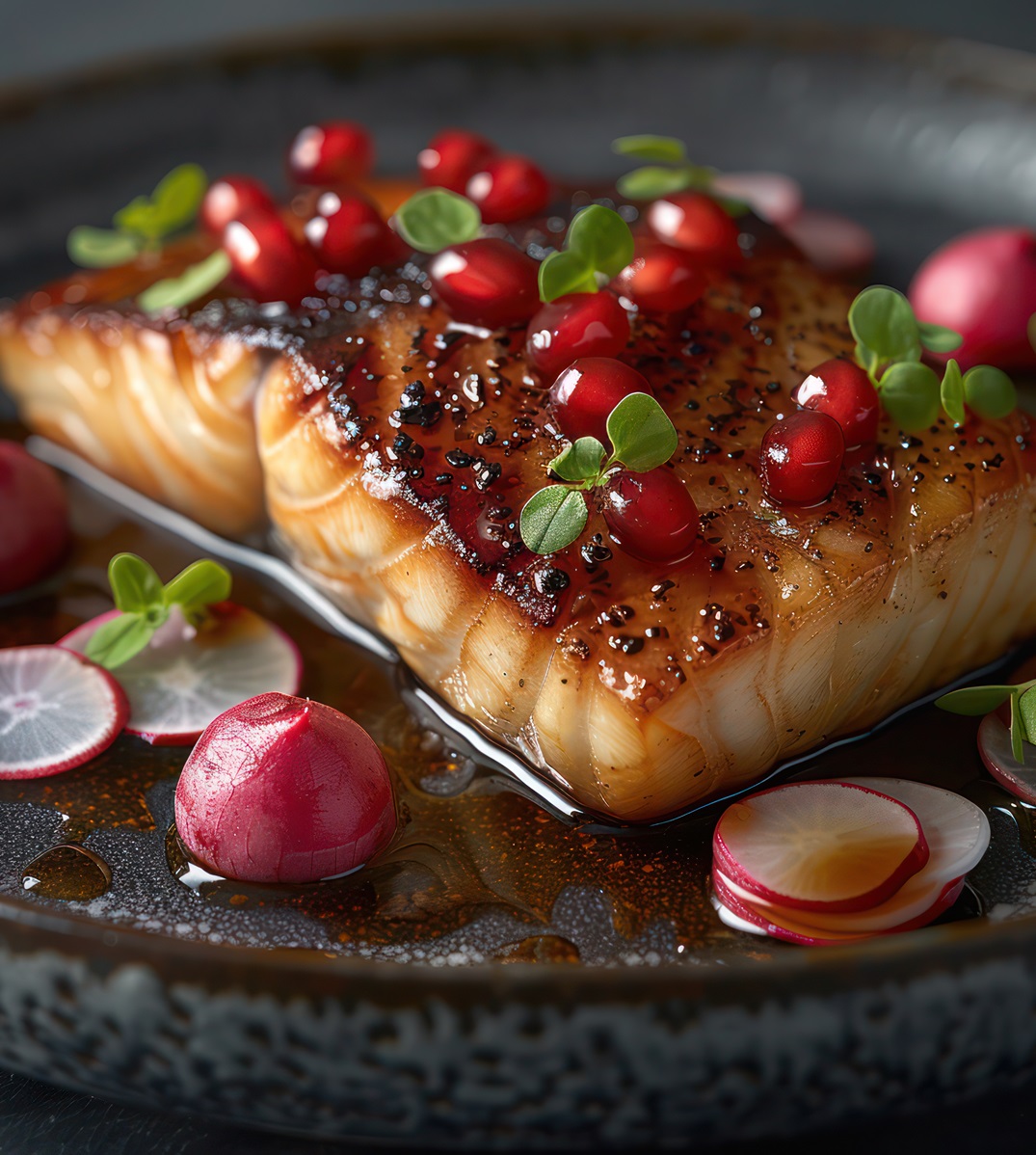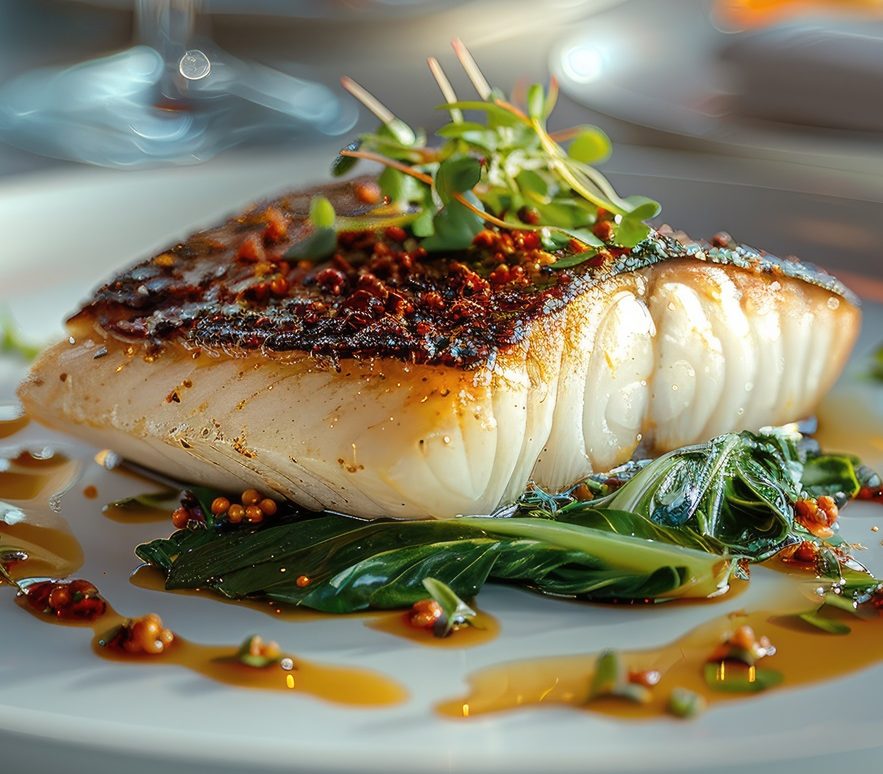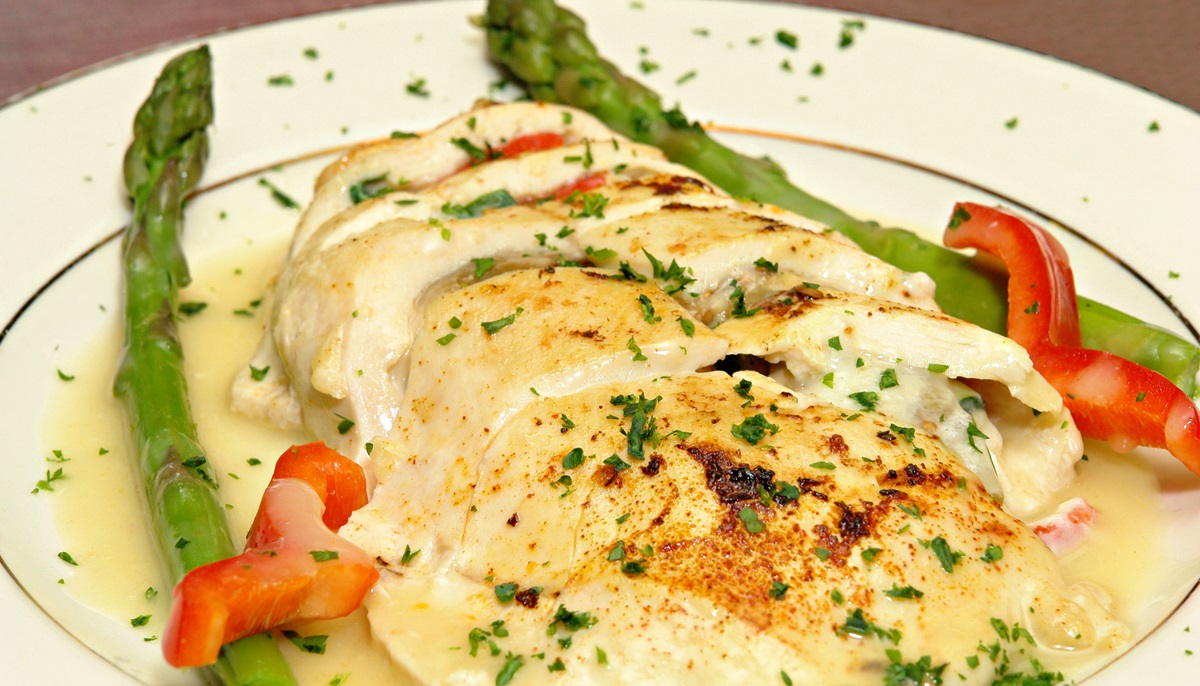In the late 1980s, Miso-Marinated Black Cod gained international acclaim when served at New York City’s Nobu restaurant, owned by celebrity chef Nobu Matsuhisa. Its distinctive taste and allure attracted food enthusiasts worldwide, leading to its widespread popularity. In 1989, Chef Kiyomasa Ikeda, a sushi master from Tokyo, introduced the dish at his Roppongi restaurant, Sushi Saito.
It quickly became popular among Japanese diners and gained further international recognition when featured on Iron Chef, fueling its popularity even more. Understanding Miso-Marinated Black Cod’s history offers insight into its unique flavor profile and presentation, enriching the cooking experience.
The fusion of traditional Japanese techniques with modern culinary trends has contributed to its global popularity, making it a must-try for anyone interested in Japanese cuisine. By exploring this dish’s origins and evolution, you can appreciate its cultural significance and deepen your understanding of Japanese cuisine.
Origins and Evolution
- The dish’s name derives from the main ingredients: black cod (Gindara) and miso marinade (zuke).
- Black cod is prized for its delicate flavor and tender texture, which are amplified by the miso marinade.
International Recognition and Popularity
- Miso-Marinated Black Cod’s international recognition stems from its unique flavor profile and presentation, captivating food enthusiasts worldwide.
- Its exposure on television shows like Iron Chef has further popularized the dish, making it a must-try for anyone interested in Japanese cuisine.

The Foundation of Flavor
Essential Ingredients
- Black Cod (Sablefish): A rich, fatty fish with a delicate flavor that pairs well with the umami-rich miso marinade. Opt for certified sustainable black cod from Alaska or Canada; if unavailable, consider alternatives such as lingcod or halibut.
- Miso Paste: High-quality white or yellow miso paste is vital for an authentic taste. Red miso is too salty and overpowering for this recipe.
- Mirin: A sweet rice wine creates a tangy marinade that complements the black cod’s richness and enhances the umami flavors from the miso paste.
- Sake: Japanese rice wine adds depth and complexity to the marinade, accentuating the dish’s unique flavor profile.
- Sugar: Balances the saltiness of the miso paste, creating a sweet and tangy marinade.
- Green Onions: As a garnish, green onions provide a fresh, slightly peppery flavor and visual appeal to the dish.
Substitutions and Their Impact on the Traditional Taste Profile
While substituting black cod with other white, fatty fish may not significantly affect the dish’s flavor, using a different type of miso paste or altering the marinade ingredients may result in a less authentic taste. If necessary, experiment with substitutions but be aware that the final result may differ from the traditional recipe.
Essential Equipment for Home Cooking
Non-reactive baking dish or glass container with a lid
Use a non-reactive baking dish or glass container with a lid to evenly marinate black cod fillets and prevent unwanted reactions between the fish and the marinade. If you don’t have a suitable dish, use a large, non-reactive plastic bag as an alternative. Proper marination ensures that the miso mixture penetrates the fish evenly for a tender and flavorful dish.
Plastic wrap (or aluminum foil)
Cover the baking dish or glass container with plastic wrap to maintain moisture content during marination, which is crucial for achieving a tender and flavorful dish. If you don’t have plastic wrap, use aluminum foil as an alternative. The primary goal is to prevent air from entering the container, allowing the marinade to penetrate the fish effectively.
Grill or broiler
Cook miso-marinated black cod evenly on a grill or broiler for a caramelized glaze on the surface. A sauté pan can be used as an alternative, but it may not produce the same charred flavor as a grill or broiler. Precise control over cooking temperature and time provided by a grill or broiler ensures that the black cod is cooked evenly without overcooking or burning.
Preparation Steps: Marination Mastery
Marinating black cod, also known as Gindara Misozuke, is a traditional Japanese method that infuses the fish with rich umami flavors. To achieve optimal results, follow these key steps and understand their importance in the marination process.
Key Steps to Marinate Black Cod Effectively
- Combine miso paste, mirin, sake, and sugar in a small saucepan over medium heat until the sugar has dissolved (3 minutes). This ensures optimal flavor development.
- The balanced sweetness from the sugar, saltiness from the miso paste, and acidity from the mirin create a harmonious blend of flavors that permeate the fish during marination.
- Let the cooled miso mixture reach room temperature before pouring it over the fish. This helps prevent the cold marinade from cooking the fish during the marination process.
- A warm or hot marinade can cook the surface of the fish, resulting in an uneven texture and compromised flavor development.
- Marinate the black cod fillets in the refrigerator for at least 24 hours, turning the fish once halfway through marination. This allows flavors to penetrate evenly and develop over time.
- A longer marinating time tenderizes the fish and enhances its flavor, but be mindful not to marinate for too long as it may cause the fish to become mushy or overly salty.

Ensuring Even Coating of the Fish with the Miso Mixture
- Place the black cod fillets in a non-reactive baking dish or glass container with a lid, ensuring complete submersion in the marinade for even coating.
- This allows for consistent flavor penetration throughout the fish.
- Cover the dish or container with plastic wrap and press down gently on the fish to help the marinade penetrate the flesh more effectively.
- Applying pressure helps the marinade seep into the fish, ensuring a uniform flavor profile.
Cooking Instructions: Achieving Perfection on the Grill or Broiler
Avoid Overcooking Miso-Marinated Black Cod Gindara Misozuke Recipe
Monitor fish while grilling or broiling, removing it as soon as glaze caramelizes and fish flakes easily with a fork.
Thicker Cuts vs. Thinner Cuts
- Thicker cuts require longer marinating times for even flavor penetration.
- Thinner cuts cook faster; check them more frequently to prevent overcooking. Aim for a minimum marination time of 24 hours for optimal results.
Tips for Grilling or Broiling Perfection
- Allow marinated black cod to rest at room temperature for 30 minutes before cooking, ensuring even cooking.
- If using a broiler, place fish on wire rack set over baking sheet to allow excess fat to drain off during cooking.
Sauce or Accompaniment Preparation: Complementary Flavors
Elevate the dining experience of Miso-Marinated Black Cod Gindara Misozuke by incorporating complementary sauces and accompaniments that harmoniously balance sweet, sour, salty, and umami flavors.
Yuzukoshō Mayonnaise
A tangy, spicy condiment made from yuzu zest, chili peppers, salt, and mustard, yuzukoshō mayonnaise is a flavorful dipping sauce. Mix equal parts mayonnaise and yuzukoshō paste for a harmonious blend of flavors.
Miso-Ginger Sauce
Miso-ginger sauce is a simple, versatile sauce made by combining equal parts white or yellow miso paste, grated ginger, rice vinegar, and sesame oil. Adjust ingredients to taste before storing the prepared miso-ginger sauce in an airtight container in the refrigerator for up to 1 week.
Soy-Mirin Sauce
Soy-mirin sauce is a classic Japanese sauce made by combining equal parts soy sauce, mirin, and sake. Adjust ingredients to taste before storing the prepared soy-mirin sauce in an airtight container in the refrigerator for up to 1 week.
Spicy Miso Sauce
For those who prefer a spicier option, consider preparing a spicy miso sauce by adding chili oil or chili flakes to the miso-ginger sauce mixture. Adjust ingredients to taste before storing the prepared spicy miso sauce in an airtight container in the refrigerator for up to 1 week.
Plating and Presentation: The Art of Serving
Showcasing Aesthetic Appeal
- Arrange fillets diagonally on a clean, uncluttered plate for an eye-catching presentation. Alternatively, stack them with the glazed side facing up.
- An odd number of pieces creates visual balance and interest.
- A colorful plate complements the dish without overpowering it; edible flowers, microgreens, or fresh herbs add color, texture, and flavor, signaling the presence of fresh ingredients.
Importance of Visual Presentation
A visually appealing dish enhances the overall dining experience by triggering anticipation and excitement for the flavors to come. At-home chefs can achieve professional-looking presentations with simple techniques like using a ring mold or other plating tools to create interesting shapes and patterns.
Elevating the Final Look with Garnishes
- Green onions offer a pop of green contrasting the dark miso glaze, while sesame seeds provide a nutty crunch and visual interest.
- Edible flowers or microgreens can be used for added color and texture; however, be mindful of potential allergies or toxicity in certain varieties.
Wine and Beverage Pairing: Enhancing Flavors
Optimal Beverages for Miso-Marinated Black Cod Gindara Misozuke Recipe
To create a harmonious dining experience, choose beverages that balance the rich umami flavor profile of Miso-Marinated Black Cod. Select whites with high acidity and moderate alcohol content to counteract its richness while allowing complex flavors to shine.
White Wines
- Sauvignon Blanc: With bright acidity, citrus notes, and minerality, Sauvignon Blanc offers a refreshing contrast to the miso-marinated black cod. Its crisp character can help cleanse the palate between bites, enhancing the overall dining experience.
- Riesling: Versatile and aromatic, Riesling pairs well with this dish due to its high acidity and varying levels of sweetness. Dry Rieslings provide a crisp, refreshing counterpoint, while slightly sweeter versions can harmonize with the umami flavors in the miso marinade.
Light-bodied Red Wines
- Pinot Noir: Delicate and fruity, Pinot Noir’s earthy undertones pair well with the richness of miso-marinated black cod. Its lower tannin content ensures a smooth, enjoyable wine experience without overpowering the dish’s flavors.
The Importance of Thoughtful Beverage Selection
A well-chosen beverage can significantly elevate the overall dining experience by balancing flavors, creating harmony, and providing a refreshing contrast to rich dishes. By selecting wines that complement the umami flavors in this recipe, you can fully appreciate the complexities of each component, enhancing your culinary adventure.
Choosing the Perfect Beverage
When pairing beverages with Miso-Marinated Black Cod Gindara Misozuke Recipe, consider the dish’s dominant flavors (umami, sweet, spicy, sour, or bitter). Aim for a complementary flavor profile that doesn’t overpower the dish. Acidity in wine can help cut through richness and cleanse the palate between bites, while alcohol content should be moderate to allow flavors to develop without overwhelming the senses.

Wine and Beverage Pairing
White Wine Pairings
- Sauvignon Blanc: A crisp, refreshing white wine with high acidity and citrus notes harmoniously balances the richness of Stuffed Flounder with Spinach and Feta Recipe. The bright acidity cuts through the dish’s flavors, creating a delightful balance.
Light-Bodied Red Wine Pairings
- Pinot Noir: A lighter red wine with soft tannins complements Stuffed Flounder with Spinach and Feta Recipe. The earthy undertones in Pinot Noir blend well with the dish’s herbs, while its acidity balances the richness of the cheese and fish.
Additional Considerations
- Rosé wine: A dry rosé wine offers versatility and complements a variety of flavors, making it an excellent choice for pairing with this dish. Look for one with moderate acidity to balance the richness of the fish and cheese.
- Sparkling wines: Dry sparkling wines like Prosecco or Cava provide an enjoyable alternative to still wines when pairing with Stuffed Flounder with Spinach and Feta Recipe. Their effervescence cleanses the palate between bites, enhancing each flavor’s taste.
- Non-alcoholic options: For those who prefer not to drink alcohol, consider pairing the dish with a dry hard seltzer or sparkling water infused with citrus flavors. These beverages mimic some of the refreshing qualities found in white wine while offering a non-alcoholic alternative.
Expert Tips and Techniques for Stuffed Flounder with Spinach and Feta
Handling the Fillets
- Handle fillets gently, avoiding tearing or breaking during cooking for even presentation and cooking.
- Rotate baking dish halfway through baking time to ensure equal heat exposure on each side of the fillet, ensuring an evenly cooked dish.
Cooking Techniques
- Use a digital thermometer to check fish internal temperature before serving, aiming for 145°F (63°C) in flounder to ensure proper cooking while maintaining its tender texture.
- Allow stuffed fillets to rest for 1-2 minutes after removing from oven, allowing juices to redistribute for a moister and more flavorful dish.
Customizing Flavors
- Experiment with various herbs and spices like basil, thyme, or rosemary instead of oregano and dill to cater to personal taste preferences or dietary restrictions.
- Marinate fillets in a mixture of olive oil, lemon juice, garlic, and herbs for 30 minutes to 1 hour before baking, infusing fish with additional aromatic flavors while tenderizing the flesh.
Presentation
- Garnish each stuffed flounder fillet with fresh herbs such as parsley or chives, along with feta cheese and lemon slices for visual appeal and added flavor.
- Serve the stuffed flounder with sautéed mushrooms, roasted vegetables, or a seasonal salad to complement the dish’s flavors and create a well-rounded, nutritious meal.
Wine and Beverage Pairing – What are some final thoughts when it comes to stuffed flounder fillets?
Fresh, High-Quality Spinach
For a flavorful Stuffed Flounder with Spinach and Feta dish, use fresh baby spinach or blanched frozen spinach. Remove excess water before use for vibrant green color and tender consistency that complements delicate flounder fillets perfectly.
Herbs Like Feta Cheese
Feta cheese adds a tangy, salty flavor that pairs beautifully with flounder’s mild taste. Crumbled feta cheese evenly distributes flavor throughout the filling, while herbs like dill, oregano, or parsley elevate dish flavors further.
Ensuring Even Cooking Results in a Golden Brown Filled Fish
Preheat oven to 200°C (400°F) and bake stuffed fillets for 12-15 minutes for even cooking results in a golden brown filled fish. Wrapping each fillet tightly with parchment paper or covering them with foil helps retain moisture during baking, resulting in a tender and flavorful dish.
Expert Tips to Elevate Flavors
- Use high-quality ingredients like fresh spinach and crumbly feta cheese for optimal flavor.
- Infuse dish with rich, aromatic garlic flavor by sautéing minced garlic in olive oil before adding spinach to skillet.
- Experiment with different types of feta cheese, such as sheep’s milk or goat’s milk feta, to create unique flavor profiles.
Suitability for Food Enthusiast Meals
The Stuffed Flounder with Spinach and Feta recipe is ideal for food enthusiasts who enjoy cooking and entertaining. Its authentic Mediterranean flavors, use of high-quality ingredients, and impressive presentation make it suitable for both main courses and showstopper appetizers at dinner parties or special occasions. Customize the dish based on personal preferences by using various types of fish, cheeses, or herbs to create unique variations.
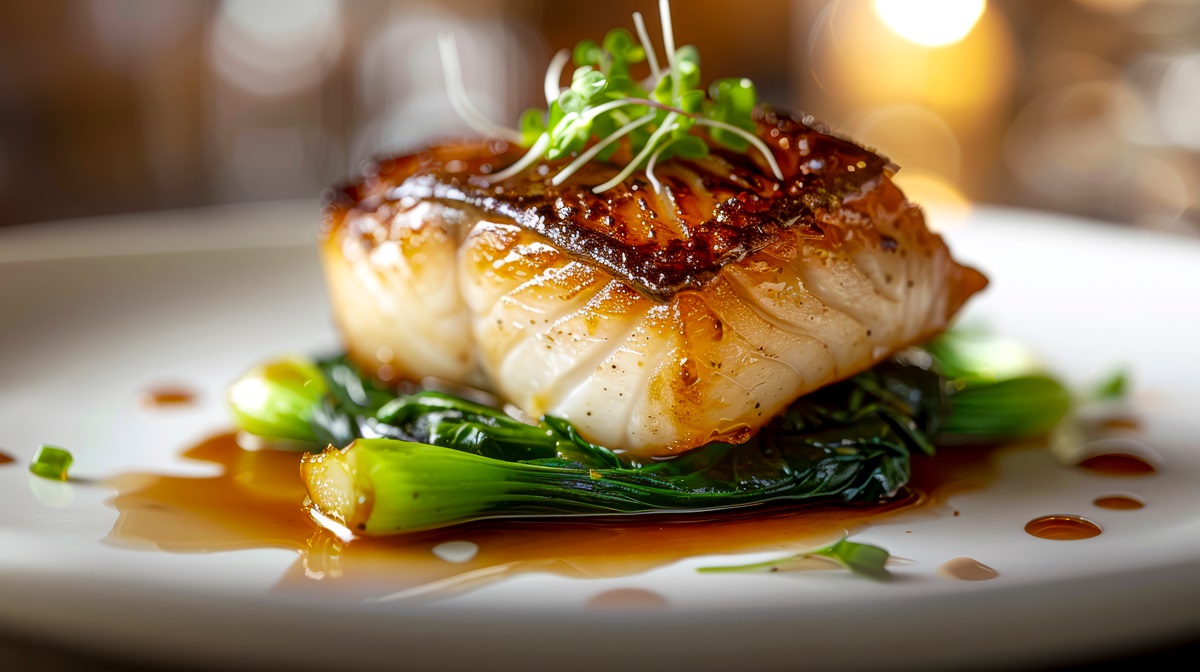
 0 comment
0 comment